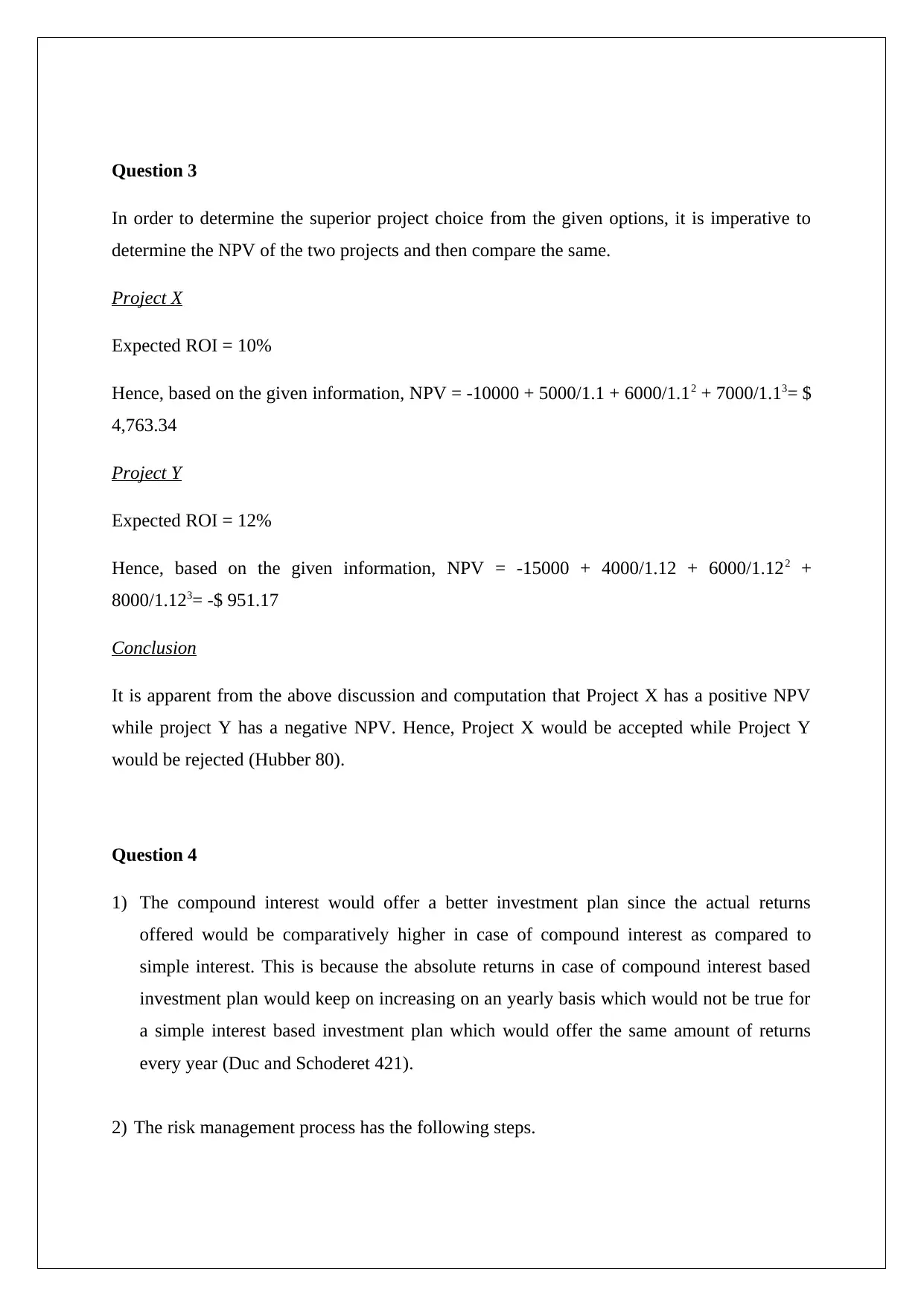Evaluating Projects & Risk: Investment Decisions & Management
VerifiedAdded on 2023/06/11
|4
|702
|55
Homework Assignment
AI Summary
This assignment provides a solution to a financial risk management problem involving the selection of one project out of two (Project X and Project Y) based on Net Present Value (NPV) analysis. Project X, with a 10% ROI, yields a positive NPV of $4,763.34, while Project Y, with a 12% ROI, results in a negative NPV of -$951.17, leading to the recommendation to accept Project X and reject Project Y. The assignment further discusses the advantages of compound interest over simple interest, outlines the key steps in the risk management process (identifying, analyzing, ranking, treating, and monitoring risks), and explains market risk and liquidity risk with relevant examples. The document concludes with a list of references. Desklib offers a wealth of similar solved assignments and past papers to aid students in their studies.
1 out of 4








![[object Object]](/_next/static/media/star-bottom.7253800d.svg)